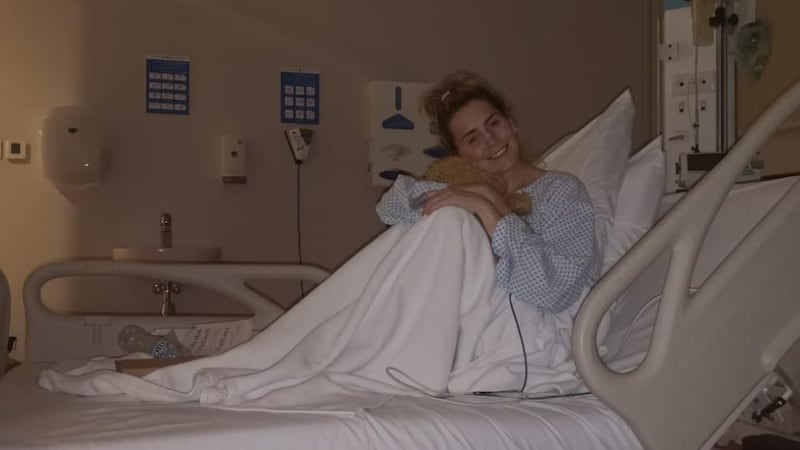About one-third of people with undiagnosed and untreated pulmonary embolism don’t survive, according to the Mayo Clinic. When the condition is diagnosed and treated promptly, however, that number drops dramatically.
I am lucky the fractions were in my favour the day it happened to me.
Thrombosis refers to abnormal, life-threatening blood clots that form in the artery or vein. A clot in the vein (usually in the leg or pelvis) is known as a deep vein thrombosis (DVT), while a clot that breaks off and travels to the lungs is known as a pulmonary embolism (PE). Together, DVT and PE make up venous thromboembolism (VTE).
Has your heart started beating irregularly and you blamed it on that extra coffee
Have you ever had shortness of breath and put it down to being unfit? Have you had light-headedness and thought you just needed to lie down for a while and rest? Has your heart started beating irregularly and you blamed it on that extra coffee you had at lunch? While these signs might all appear relatively harmless on the surface, what could be going on in your body is much more ominous.
As humans (and Irish people), sometimes we ignore the messages our body sends us in favour of not making a fuss, uttering the classic phrase “Ah, sure it will pass.”

On October 12th, 2020, I experienced all the symptoms mentioned above, which eventually led me to collapse.
Unbeknown to me at that moment, a massive blood clot had passed through my heart and split in two entering both my lungs.
I woke up that morning with a heavy feeling in my chest. I decided I would go for a walk to get some air into my lungs and try to shake this feeling off. A few weeks before, I had been bedridden with back pain for about nine days, so I was gradually easing myself back into exercise.
I set out for my walk, and I voice-messaged my sister and told her how “unfit” I was and how this was clearly audible in my breath. I started to jog. Knowing what I do now, this exertion served to exacerbate my shortness of breath and I began to lose focus, fast. This movement seemed to flout the laws of motion. It was as if I was the one rotating on an axis while the earth remained still. We had switched position and this sudden shift threatened my whole existence.
I quickly realised I was in the stranglehold of something very serious. It is hard for me to describe this experience but luckily, I have a quote from my favourite poet for that. Commenting on his poem Postscript, Seamus Heaney described the creative process as "this quick sidelong glimpse of something flying past". The feeling of standing outside of something and powerlessly peering in.
And just like that, everything went black
While my mind was trying to process what was happening to me, my body was establishing another plan of attack: putting me on my back. And just like that, everything went black. I woke up dazed and bruised and made my way back to the apartment. I couldn’t explain to my husband Cathal what had just happened but I still felt extremely dizzy, so he drove me to a nearby hospital.
I underwent an array of tests culminating in a CT scan. When the results of my initial blood results came back, the cardiologist, who had been at home that morning, was called into work. During our initial meeting, he informed me that my blood results would be acceptable for an elderly person, but this was not normal for an otherwise healthy 32-year-old woman.

An underestimated figure of about 6,000 cases of blood clots is recorded by the HSE each year in <a class="search" href='javascript:window.parent.actionEventData({$contentId:"7.1213540", $action:"view", $target:"work"})' polopoly:contentid="7.1213540" polopoly:searchtag="tag_location">Ireland</a>
The cardiologist told me I had suffered a life-threatening bilateral pulmonary embolism. I was immediately given an anti-coagulant injection and admitted to ICU. He concluded that there were two contributing factors which led to my diagnosis: the period of immobility a few weeks previously and the contraceptive pill which I had been taking for years. (Certain ingredients in particular brands increase the risk of clotting.)

An underestimated figure of about 6,000 cases of blood clots is recorded by the HSE each year in Ireland. This number excludes people treated as outpatients. Those who fall into this category include maternity admissions, children with blood clots and those who do not make it to hospital at all, fatal admissions.
The statistics are startling. Due to the non-discriminatory, potentially fatal nature of thrombosis, this estimate is nowhere near accurate – and 50 per cent of these cases are potentially preventable, reducing the risk of death and disability for thousands of people.
- One in 20 Irish people will experience a blood clot in their lifetime.
- It is the number one cause of preventable death in our hospitals and in the 90 days following discharge from hospital.
- It is the number one cause of direct maternal death in our maternity hospitals.
- One in five cancer patients will get a blood clot.
- One in four people worldwide die of causes related to thrombosis.
The most important fact to process is this one: blood clots are treatable if caught in time. Through the Thrombosis3 campaign, Thrombosis Ireland shares the trifecta in protection:
- Know what increases your risk
- Know the signs and symptoms
- Get medical attention fast if you suspect a clot
If I even had an inkling about the symptoms to look out for, I could have had a head start, but the PE literally hit me out of left field.
I am very aware that not everyone will be as fortunate as me but knowledge breeds possibility. It is now my aim to raise awareness, and this starts with Thrombosis3. October 13th is World Thrombosis Day.
Aoife McHugh is an English teacher, yoga teacher and freelance writer based in the UAE












